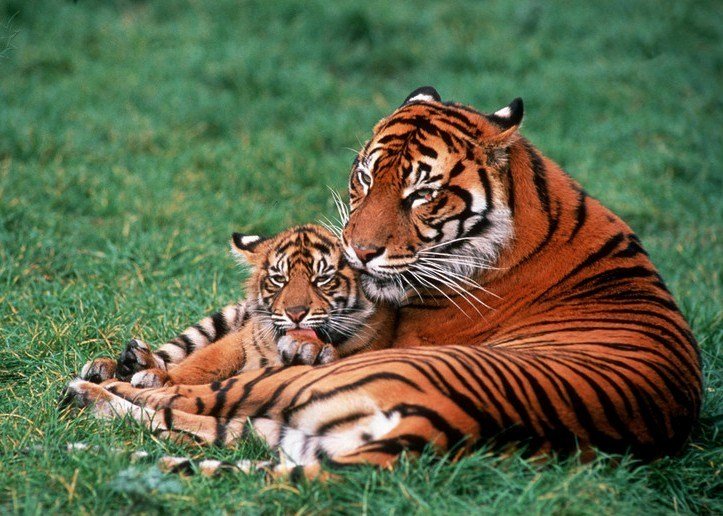An encouraging announcement from the Government of Nepal on Global Tiger Day put the number of wild tigers in the country at 198 (163 - 235). This marks an increase in the population by 63% from the last survey in 2009.
“Nepal’s results are an important milestone to reaching the global TX2 goal of doubling the number of wild tigers by the year 2022,” stated Megh Bahadur Pandey, Director General of Nepal’s Department of National Parks and Wildlife Conservation. “Tigers are a part of Nepal’s natural wealth and we are committed to ensuring these magnificent wild cats have the prey, protection and space to thrive.”
Tigers are found in the Terai Arc Landscape stretching 600 miles across 15 protected area networks in Nepal and India. The two countries embarked on the first-ever joint tiger survey using a common methodology in January 2013. In Nepal, the field survey was carried out between February and June 2013 followed by two months of data analysis to arrive at the final estimates. It was agreed by the two governments that each country could release its national estimates and that a joint report will be released later in the year to provide a landscape-wide estimation of tiger populations and a better understanding of tiger movements in the trans-boundary landscape.
Nepal’s analysis covered five protected areas and three corridors. It revealed tiger populations have tripled in Bardia National Park, from 18 (17 - 29) in 2009 to 50 (45 - 55), and doubled in Suklaphanta Wildlife Reserve, from 8 (8 - 14) in 2009 to 17 (13 - 21). Tiger numbers in Chitwan National Park, home to the country’s largest number of wild tigers, have also increased, from 91 (71 - 147) in 2009 to 120 (98 - 139). The results have also shown a comeback of tigers in the recently declared Banke National Park with the presence of 4 (3 - 7) tigers.

“While we celebrate the positive results from this tiger survey, WWF calls on the government of Nepal to redouble efforts to protect these conservation gains that could easily be lost as human-tiger conflict increases and illegal wildlife trade empties our forests,” stated Anil Manandhar, Country Representative of WWF Nepal. “Tigers are an iconic symbol of wild nature and WWF will continue to work closely with the government, conservation partners and local communities in Nepal to get to TX2.”
The tiger and prey-base survey was a collaborative effort of the Government of Nepal’s Department of National Parks and Wildlife Conservation and Department of Forests, WWF Nepal and National Trust for Nature Conservation. It was funded by WWF UK, WWF Australia, WWF US, Leonardo DiCaprio Foundation, Hariyo Ban Program (funded by USAID), and US Fish and Wildlife Service.
Hi! I am a robot. I just upvoted you! I found similar content that readers might be interested in:
http://www.wwfnepal.org/?209484/Nepal-records-remarkable-growth-in-tiger-numbers
Great
very nice!
very nice!